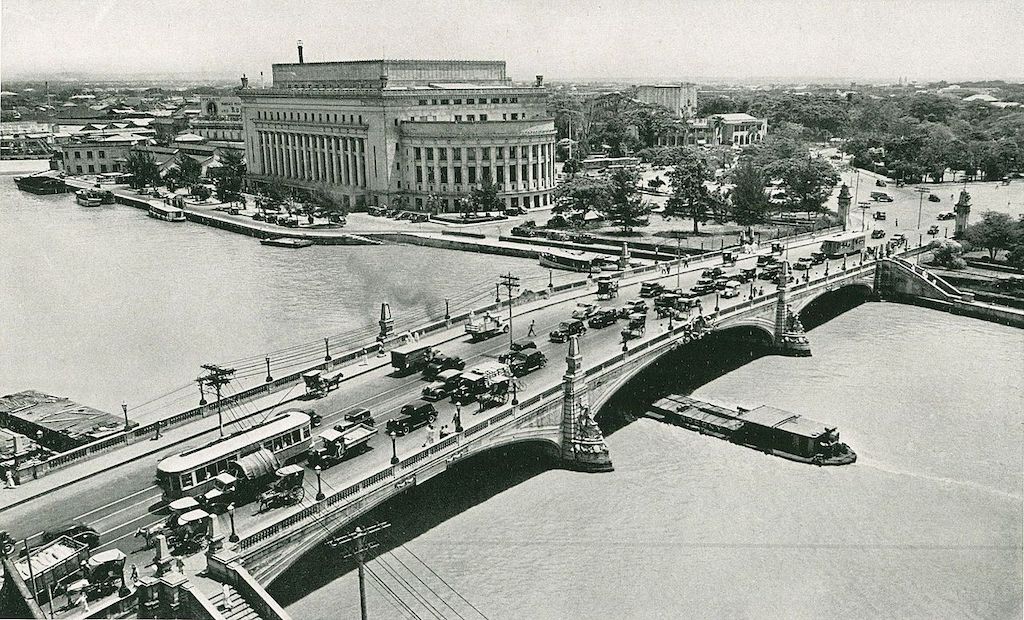When Manila’s Jones Bridge was renovated and reopened in November 2019, many likened the neoclassical bridge with its gilded lamp posts and ornate sculptures to those in Paris. It easily recalls the famed Pont Alexandre III bridge which spans the Seine and connects the Champs-Élysées quarter with those of the Invalides and Eiffel Tower. The bridge is widely regarded as the most ornate and extravagant in Paris.
Jones Bridge designer Juan M. Arellano meant it to be that way. Commissioned by the US government in the Philippines in 1918, Arellano worked from the city plan of Daniel Burnham who, thinking of the city’s river networks, wanted the Pasig River to look like the Seine. It was said that Arellano himself was so inspired by Pont Alexander III during his trip to Paris that Jones Bridge also had the statuaries of boys on dolphins.

In fact, a never before seen print of Arellano’s original design for Jones Bridge shows his concept as replete with statuaries and buttresses often found in French structures from that pre-war era. The print, recently shared online by architect Gerard Lico, shows two of the bridge’s four buttresses with statues of what looks like a woman holding a trident and standing on top of a sea beast. Under Arellano’s signature, Fernando Soriano of the Bureau of Public Works is credited as delineator for drawing the details.


Arellano, writing in the 1917 issue of the Bureau of Public Works Bulletin, described his design thus:
“The Jones Bridge will be decorated by pylons and statuary and will be interposed and embellished by graceful bronze candelabra. The buttresses will be adorned by ornamental figures. Both approaches to the bridge will be decorated by pylons serving as the basis for the entire group of allegorical statuary representing democracy, justice, gratitude, and progress.”
Arellano was referring to the four statues that adorned the bridge’s four pillars called La Madres, which each represented the four concepts he mentioned in that issue of the Public Works Bulletin.
Looking back
In the same publication was a perspective view of the project attributed to William E. Parson and his team that included “a growing number of Filipino architects who trained in the United States as government pensionados.” When the Jones Act was enacted, Filipino architects Arellano and Tomas Mapua took over Parsons in 1918.

Jones Bridge however became a casualty of the Battle of Manila in 1945 during World War II, which destroyed the bridge’s plinted statues. The following year, Jones Bridge was reconstructed sans the pompous structures pictured in the original design print. Only three of the La Madres survived the war and were briefly relocated. It was only during Jones Bridge’s latest renovation in 2019 when these sculptures were brought back to its original location.

A multi-disciplinary artist
The original print of Jones Bridge was one of the records that Lico had unearthed from Arellano’s archive, along with other plans for some of his most prolific works that include a design for the Bonifacio Monument in Balintawak. That monument never materialized—at least not in the likeness that Arellano had imagined. It was later designed by National Artist for Sculpture Guillermo Tolentino and stands to this day at the Bonifacio Circle or Monumento in Caloocan, with the sculpture widely known today as the “Cry of Balintawak”.
Juan Arellano's Croquis for the Monument of Andres BonifacioJuan Arellano won First Prize in 1915 for a design…
Posted by Gerard Lico on Thursday, January 28, 2021
Lico’s research is part of an upcoming book about Arellano’s oeuvre. While the architect is known for his edifices like the recently renovated Metropolitan Theater, he also did some paintings. His final exhibition in 1960 at the YMCA Building in Manila actually showcased his versatility. Other than being a famed architect, Arellano was a painter, a landscape architect, a city planner and sculptor.




